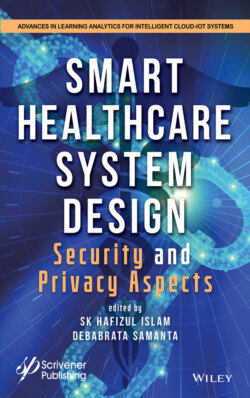Читать книгу Smart Healthcare System Design - Группа авторов - Страница 43
2.3 Smart Computing for Smart Health for Ambulatory Patients
ОглавлениеIntelligent computing gives huge prospects to building up Smart wellbeing benefits as necessary pieces of future consideration ideas [41], which are tested by our maturing society. In this unique situation, specifically brilliant homecare conditions are frequently proliferated as a promising answer for dealing with older or incapacitated individuals. Sensors and new collaboration innovations flawlessly incorporated in such situations offer different structures of customized and setting adjusted average help, including help to complete ordinary exercises, checking individual wellbeing conditions, improving patient security, as well as gaining admittance to social, clinical and crisis frameworks. Brilliant social insurance applications have the potential to deliver clinical, social and conservative benefits to different partners by providing a wide range of administrations. The goals vary from enhancing convenience, encouraging improvement of self-governance to crisis support, including identification, counteraction and forecasting [37, 38].
After a certain age and due to some specific diseases the patients need some care at their locations (at home, at any remote place). These patients are known as ambulatory patients, who after a certain treatment need continuous monitoring using the smart applications. The applications are designed according to every disease and patient’s conditions that include its disease parameters. After setting these parameters, there is a need for remote monitoring done by the application remotely at the patient’s current location. Therefore, currently, the health is growing towards the smart and decisions making applications to support the patient and doctor to monitoring and medication [39, 40].
There are also some difficulties faced by the scientific community and developers because of developments in the health sector. There are technological problems concerning versatility, imperceptibility (keen devices incorporated in our daily activities, such as wearable parts, watches, glasses, etc.), simple correspondence like voice and signals instead of help or cursor, or moreover adaptive and setting care, as the two crucial issues “flexible direct in setting” are essential to “understanding” i.e. suit [42, 43].
